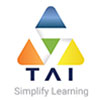jQuery is a JavaScript toolkit that significantly simplifies rich web based application development. This course teaches a developer all aspects of jQuery based application development. The class is not specific to any vendor’s platform and it equally applies to Java, .NET, PHP etc. All labs are done using plain web server and editor.
About Jquery
Learning Objectives
jQuery basics and functions
Using selectors with jQuery
Manipulating page elements with jQuery
jQuery event model
jQuery and Ajax
jQuery animation and advanced effects
jQuery plugins
Who should take this course?
Developers responsible for designing the web front end GUI using jQuery.
Prerequisites
Good knowledge of JavaScript and DOM API is required.
Course Content
jQuery Overview
- Target Background
- References
- Unit Topics
- What Is jQuery?
- Benefits of Using a JavaScript Library
- jQuery Example
- CSS Selectors
- How to Use jQuery
- Practical Usage Notes
- Background – DOM
- Background – DOM Ready Events
- Background – JavaScript Functions
- The jQuery Function Object
- What Does the $() Function Take as Argument?
- What Does the $() Function do?
- The jQuery Wrapper
- The jQuery Wrapper as an Array-Like Object
- Note: innerHTML() vs. .html()
- jQuery Wrapper Chaining
- API Function Notation
- Handling DOM Ready Event
- xhtml Note
Selectors
- Background: The Sizzle Selector Engine
- Selecting Elements by Attribute
- Pseudo-Selectors
- Form Pseudo-Selectors
- Faster Selection
- Selecting Elements Using Relationships
- Selecting Elements Using Filters
- More on Chaining: .end()
- Testing Elements
- Is the Selection Empty?
- Saving Selections
- Iterating Through Selected Elements Using .each()
- JavaScript Methods
- JavaScript “this”
- Function Context
- The Function call() Method
- .each() Revisited
Style Class Manipulation
- Two Options
- Specifying Style Properties
- Setting Style Properties
- .addClass() / .removeClass()
- Defining a Stylesheet
- Setting & Getting Dimensions
- Attributes
DOM Manipulation
- The $ Function Revisited
- Getters and Setters
- The text() Element Method
- Appending DOM Elements
- Removing DOM Elements
- Performance
Events
- Event Overview
- Old School: Event Handling Using HTML Element Attributes
- Unobtrusive JavaScript
- Unobtrusive JavaScript Example
- Multiple Handlers
- Using jQuery Wrapper Event Registration Methods
- The .bind() Method
- Event Propagation
- Handlers for Elements Before They Exist!
- The Event Object
- Triggering Events
Utility Functions
- The jQuery Object Revisited
- Functions May Have Methods
- A jQuery Utility Function: $.trim()
- $.each()
- Example jQuery Utility Functions
Ajax
- Ajax Overview
- The Browser & the Server
- The Ajax Request
- The Ajax Response
- Sending an Ajax Request With jQuery – The General Case
- When this code is executed…
- Sending an Ajax Request With jQuery – Simpler, Typical Case
- Data Types
- The .data() method
Advanced Ajax
- A Form Example
- An Ajax Form Example
- Serialize()
- Get vs. Post
- More on Query Strings
- ajaxStart() and ajaxError()
Animations and Effects with jQuery and jQuery UI
- What is jQuery UI?
- Can I do Animations and Effects using jQuery only?
- Hiding Elements with jQuery
- Using .hide() and .show() in jQuery
- Alternating an Element’s Visibility in jQuery
- Adjusting the Speed in jQuery
- Providing a Handler in jQuery
- Using .slideUp() / .slideDown() methods in jQuery
- jQuery UI Categories
- jQuery UI Interactions: Droppable and Draggable
- Droppable and Draggable More Complete Example
- jQuery UI Widgets: Datepicker
- jQuery UI Widgets: Autocomplete
Parsing JSON
- JSON
- Reading JSON from the Server Using Ajax
- Example file contents
- Using the Results
- Optimized Version
- Getting More From the Response
- jqXHR Methods
- POST vs. GET
- Invalid JSON
- Using $.ajaxSetup()
Plugins
- What is a plugin?
- Goal
- Self-Executing Anonymous Functions
- Meeting Our Goal
- Prototype Objects
- The jQuery Wrapper Class Revisited
- Example Plugin
- Using the Plugin
Call Now- +91-921-276-0556


